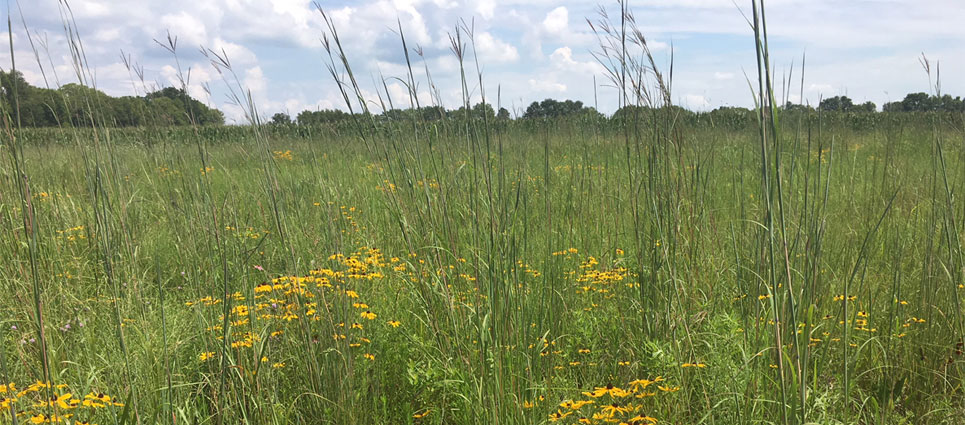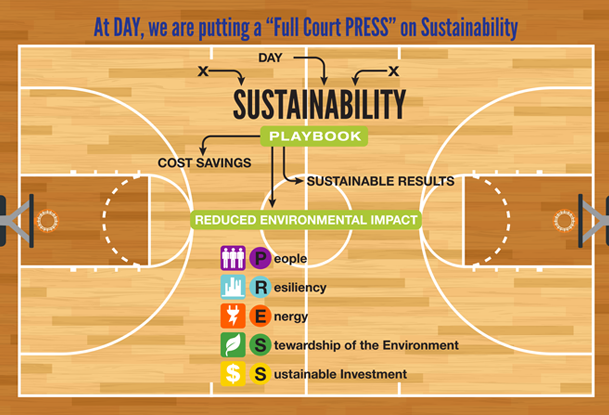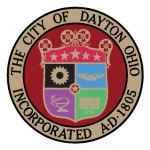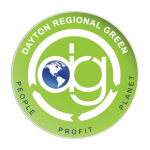Search departures
Recycling & Sustainability
Planes & Prairies: a DAY Safety Program

The intersection of aircraft and wildlife concerns airports, airlines, and conservationists across the US. The Dayton International Airport is conducting cutting-edge research to determine best land management practices to deter hazardous wildlife around the airport.
Typically, airports are surrounded by agricultural fields or airfield turf, which provide habitat and food for large wildlife that can endanger planes. Through Planes & Prairies: A DAY Safety Program, airport land is being converted to dense, native tallgrass prairies which attracts small, sometimes threatened grassland species while deterring larger, more hazardous birds.
Planes & Prairies: a DAY Safety Program serves as a conservation effort and a life-saving measure. As the leading airport participating in this national study, the Dayton International Airport demonstrates commitment to safe, effective travel while using their property to the fullest potential… making them a better local, national, and global partner in sustainability. This unique study is conducted in close partnership with the Aullwood Audubon Center and Farm and with the support of the City of Dayton.

DAY Recycling Program
All of us here at the Dayton International Airport (DAY) share a commitment to environmental responsibility. That’s why we created a comprehensive program aimed at recycling the majority of the airport’s waste stream. We’re already making significant headway toward that goal. We’ve reduced energy consumption, implemented green construction practices, and transitioned to earth-friendly cleaning products.
But that’s just the beginning. With your help, DAY will continue to find new and better ways to conserve vital natural resources and landfill space in the months and years ahead.
Gilbert Turner
Director of Aviation
We worked with RUMPKE Recycling to audit a single day’s worth of trash at the airport terminal. That research gave us a critical snapshot of the coming led recyclables, solid waste, and compost generated daily at the airport. We’re using that picture to develop and implement new improvements to our recycling program.
For example, our research showed that customers entering the TSA security checkpoints were all too often leaving nearly full containers of coffee, soft drinks, and water in the trash and recycling cans. The solution? We located new portable Liquid Collection Stations at checkpoint entrances making it much easier for passengers to separate liquids from cans and bottles for recycling.
Thanks to everyone for supporting the Dayton International Airport Recycling Program. And a special thank you to all our sponsors and partners who make the program possible.
DAY Sustainability Program
Letter from the Airport Director
The following represents the Sustainability Master Plan for the Dayton International Airport.
Implementing a strategy based on Sustainability is necessary to maintain the economic viability of the Airport and the Region as a whole. The Development of our Sustainability Master Plan takes our program to the next level and ensures its success. The Plan is our guide to improving our operations while reducing our environmental impact.
You will find detailed descriptions on what Sustainability means to the Aviation Industry and a prioritized list of initiatives designed to advance our sustainability goals in the areas of Energy Conservation, People, Environmental Stewardship, Sustainable Investment and Resiliency.
We want to thank the many partners who helped us, including the FAA for seeing the value in sustainability and having the foresight to encourage airports to include sustainability in their master planning process.
If we’re going to protect the long-term use of airports in an increasingly populated area, we need to be less intrusive and find ways to contribute in a positive way to our surroundings.
Very Truly Yours,
Gilbert Turner
Director of Aviation
The intent of identifying a mission statement, goals, and objectives is to define DAY’s commitment to financial, social, and environmental sustainability. High level goals have been developed for each area of sustainability, supported by objectives that are measurable and specifically designed to help the Airport achieve each goal. These goals and objectives also support the overall vision of sustainability for the Airport.
Sustainability Mission Statement
A sustainability mission statement was developed to support DAY’s vision and guide the Airport’s future sustainability focus. This mission statement informed the development of sustainability goals (and ultimately, the objectives); and together, provide a guiding framework for DAY’s sustainability program.
Sustainability Goals
Based on the information obtained during the baseline assessment and coordination meetings with Airport management, goals were developed to enhance DAY’s sustainability efforts for each focus area. The following sustainability goals were developed in support of this Sustainability Master Plan:
People
DAY will implement actions to enhance the passenger experience and promote the well-being of Airport employees.
Resiliency
DAY will embrace regional efforts to implement actions to enhance the Airport’s resilience to impacts associated with climate change.
Energy
DAY will utilize design and operational techniques to maximize energy efficiency and the use of clean and renewable energy sources.
Stewards of the Environment
DAY will play a leadership role in the community by minimizing the Airport’s impacts to the natural environment and consumption of natural resources.
Sustainable Investment
DAY will engage in sustainable and responsible investment of its land, capital, and human resources to contribute to a thriving regional economy that attracts and retains business partners.

Download the Dayton International Airport “Sustainability Master Plan” Report.







